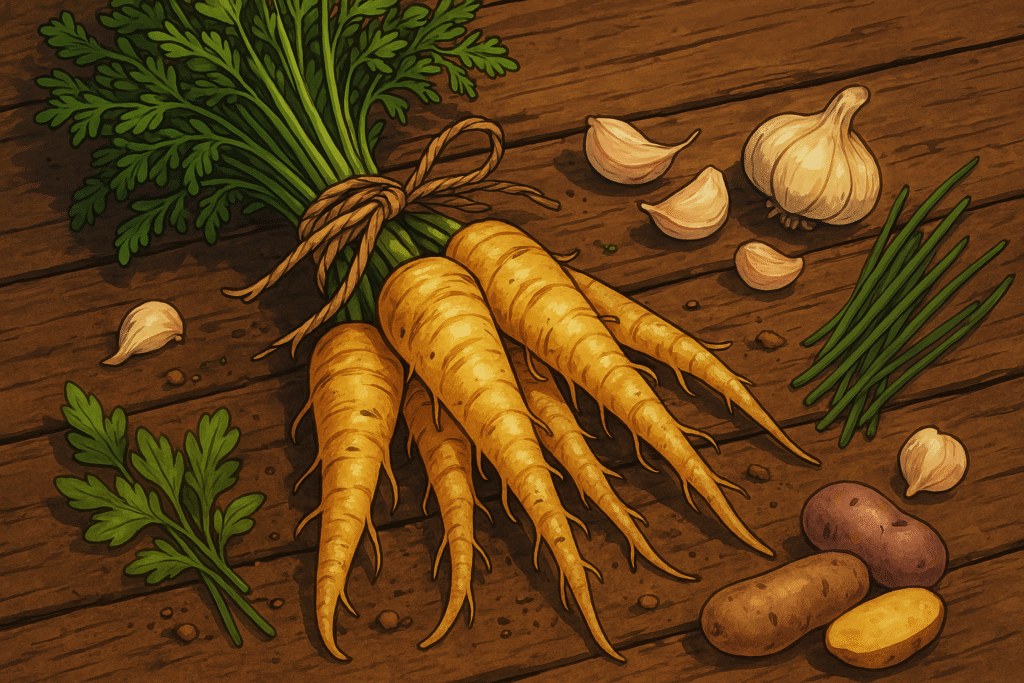Parsnip (latin name)

About Parsnip
Parsnips are pale, carrot-shaped root vegetables with a sweet, nutty flavor that intensifies after frost. Though often overshadowed by flashier produce, they’re cold-weather stars with a complex, earthy richness.
They’re excellent roasted, mashed, pureed into soups, or even baked into cakes.
The History of Parsnip
Parsnips were a dietary staple in Europe before the arrival of the potato. Ancient Romans prized them for sweetness and nutrition, and medieval Europeans relied on them as a winter staple.
They were often used in place of sugar in baking and beer before refined sweeteners became common.
The Science of Parsnip
Parsnips convert starches into natural sugars after exposure to frost — giving them a signature caramel flavor. They’re rich in fiber, vitamin C, folate, and potassium.
They also contain polyacetylenes, compounds with antifungal and antioxidant properties.
The Geography of Parsnip
Parsnips thrive in cool, moist climates and are widely grown in the UK, northern Europe, Canada, and the northern U.S.
They’re left in the ground until after frost to sweeten, and they store well in cold cellars — making them perfect for winter meals.
Varieties of Parsnip
Hollow Crown
Heirloom with large, tapered roots. Sweet and reliable for long growing seasons.
Gladiator F1
High-yielding hybrid. Smooth-skinned and very sweet after frost.
Tender and True
Old English favorite with creamy flesh. Great for roasting.
Albion
Fast-growing variety with white, tapered roots. Mild, sweet flavor.
Javelin
Uniform, disease-resistant, and ideal for commercial growers.
FAQs All your questions about Parsnip: answered
Do parsnips taste like carrots?
They’re similar in texture but have a nuttier, earthier flavor with more sweetness after frost.
Can you eat parsnips raw?
Yes — thinly sliced, they’re crunchy and slightly peppery, though most enjoy them cooked.
Why are parsnips sweeter in winter?
Cold temperatures trigger starch-to-sugar conversion, enhancing their natural sweetness.
Are parsnip tops edible?
No — unlike carrots, the tops can cause skin irritation and are generally discarded.